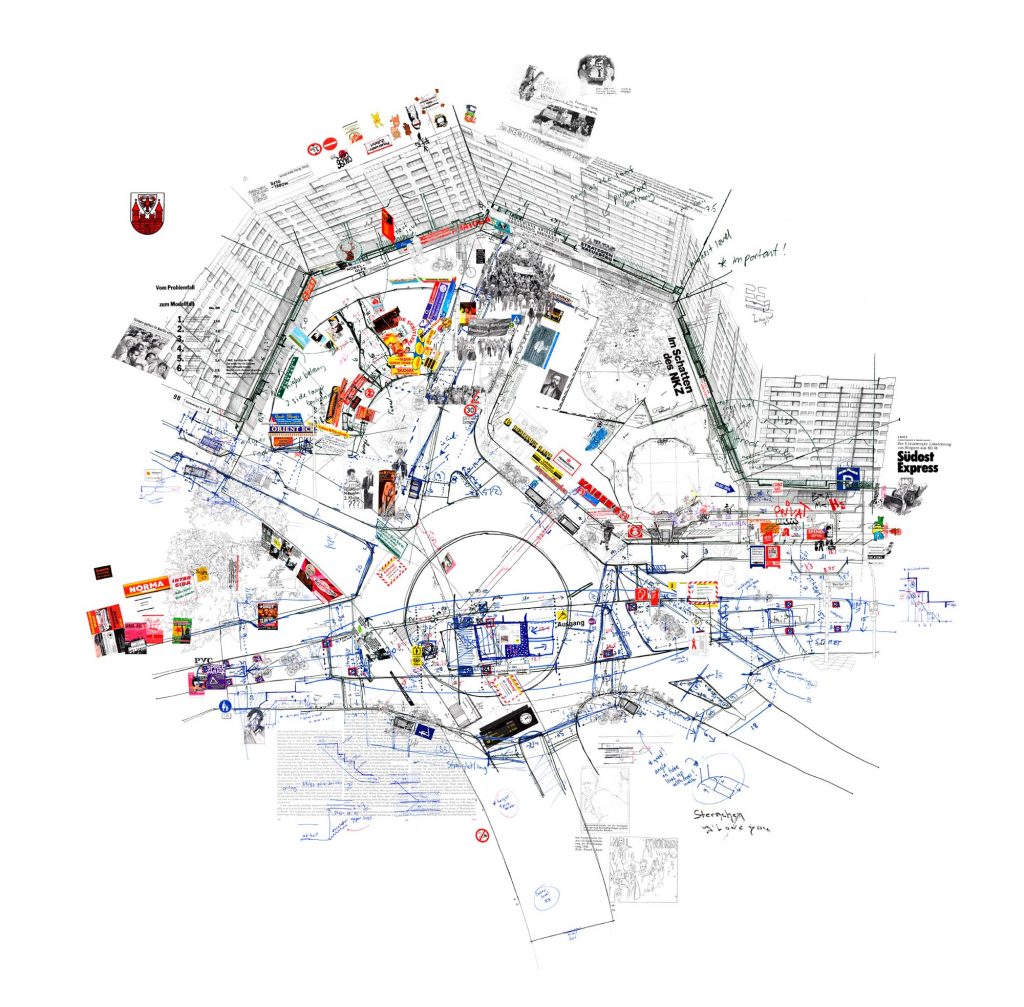Identify two readings from the course reading list that relate to your investigation, and then describe and expand on these connections through writing. To help you be specific, describe the connection to each reading in the context of one of the following types of relationship; theme, form, process.
Thematic parallels can be drawn between ‘The Street’ in Georges Perec’s ‘Species of Spaces and Other Pieces’ (1974, pp. 46-56), and my methods of investigating project, Somers Town: An Enquiry into the Relationship between ‘The Maker’s Mark’ and Urban Regeneration. Perec (1974, p. 51) astutely presents a system to ‘decipher a bit of the town’. The methodology entails a detailed observation of space through note-taking, to capture both the architecture and the movements of the inhabitants. Although note-taking was not my primary mode of surveying, the concept of reading ‘what’s written in the street’ (Perec, 1974, p. 51), focused my research into a consolidated line of enquiry to study and represent Makers Marks along a prescribed route through Somers Town.1 The notion of reading the street remained central throughout my process as Makers Marks were identified, photographed, located, and re-represented through iterative map-making.
‘Kottbusser Tor’ by Larissa Fassler (2008, 2010, 2014) acted as a primary point of reference that inspired the visual quality of my research. Fassler’s (2008, 2010, 2014) work is characterised by architectural and diagrammatic mark-making. Mark-making is the primary method of investigation adopted throughout my studio project as a critical tool to understand the spatial qualities of Somers Town. Key terminology, including Mark-Making, guided the experimentation and formed an index of structured chapters. ‘Kottbusser Tor’ utilises layering as an instrument of observation, conveying a variety of different ideas within the framework of a fixed composition (Fassler, 2008, 2010, 2014). This is best exampled in my own project at the denouement of the narrative, as all the layers created throughout were deconstructed and reordered to effectively represent the three key terms used to index the body of work: Mark-Making, The Maker’s Mark and Marks Made. Furthermore, a cohesive connection between Fassler’s ‘Kottbusser Tor’ (2008, 2010, 2014) and my research can be drawn in the approach to representing space through an abstracted cartography. Both Fassler and myself use map-making as a form of representation of personal experience of space, allowing places of importance to be promoted within the hierarchy of the map. Although this does not create a true reflection of the space, it is reflective of one’s phenomenological experience of place.

In conclusion, the thematic parallel between Perec’s ‘The Street’ in ‘Species of Spaces and Other Pieces’ (1974) and my method of investigation can be synthesised into the idea of reading the street. Fassler’s (2008, 2010, 2014) work is more similar to my exploration in theme, form and process than Perec’s (1974) writing. The detailed exploration into inhabitants repurposing of their own space within the building, Kottbusser Tor (Fassler, 2008, 2010, 2014), is an alternative form of a Makers Mark, whereby residents have modified homes to suit their human needs. Although a parallel can be drawn between my research and Perec’s (1974) text, Fassler’s (2008, 2010, 2014) body of work defined my own line of enquiry.
- Within the context of this discussion and my studio project, The Makers Mark is defined as an architectural feature that has a human-made quality to it, and displays a level of craftsmanship that is often overlooked in contemporary building practice.
↩︎
Reference List:
Fassler, L. (2008, 2010, 2014). Kottbusser Tor. [Fine Art Print]. FAIL!, Node Curatorial Center, Berlin. Available at: http://www.larissafassler.com/kottidraw_1.html (Accessed: 12 October 2025).
Perec, G. (1974). Species of Spaces and Other Pieces. Reprint, London: Penguin Books Ltd, 1997.
Leave a Reply